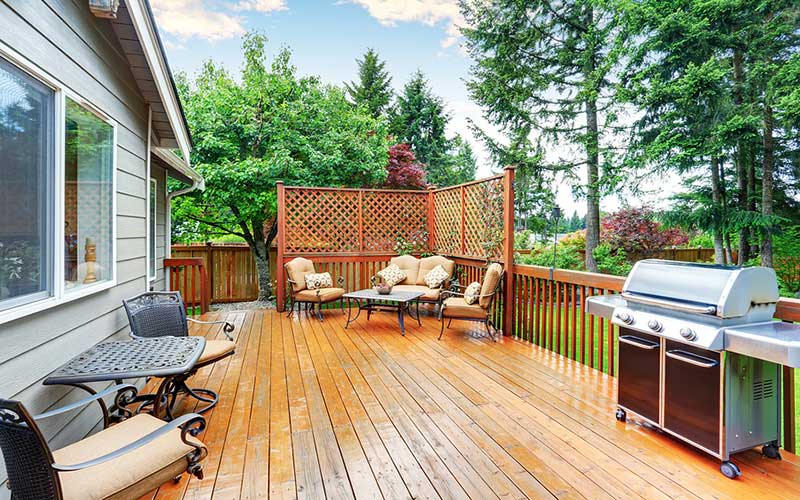
We’ve all heard news stories about decks collapsing. But no one ever thinks it will happen to them. Even if your deck was built well, it’s still outside and sustains the ever-changing New England weather.
According to a U.S. Consumer Product Safety Commission study, approximately 224,000 people are injured nationally on decks and porches. Nearly 15 percent of those injuries result from structural failure or collapse. So, it’s important to conduct a regular deck inspection to ensure your family and friends are safe. Remember because your deck is outside and has to withstand bad weather, the older your deck is, the more frequently you should inspect it.
Prior to inspection, you need to identify the material used to build the deck. Different materials show wear in different ways. For example, an issue for composite and vinyl decks is fading while wood decks may look warped. Knowing the type of deck material used, and the warning signs to look for, will help with an initial assessment.
Inspecting your deck
Conduct a deck inspection on key parts to keep your family and guests safe. Here are 5 areas to check regularly.
1. Check for loose handrails and posts
Since people often stand against railings, it’s important to ensure your railing system is steady and safe. First, you’ll want to examine your deck’s railing to see if it’s rotting. If it’s not, you can lean on the railing to check for any loose posts or handrails. If your railing is the only part of your deck where you’ve found a problem, you can fix it by securing the loose areas with galvanized screws (screws coated with zinc to prevent corrosion).
2. Inspect the ledger
The ledger is the part of the deck that connects to your home. If it’s starting to pull away from your house, you likely have a safety issue. Make sure the ledger was installed properly and screws were used instead of nails. You should also check for holes or rust, both of which must be repaired or placed immediately.
3. Examine the joists
Joists hold up your deck and are important for its stability. If the joists are starting to rot or the wood is soft, this damage must be addressed right away to maintain the safety of your deck. You can tell if it’s a problem by trying to push a tool into the wood. If it easily enters the wood, you’ll need to replace them. You’ll likely have to tear up an area of your deck to replace damaged joists so keep that in mind. If there are other issues, it may be cost effective to rebuild the entire deck.
4. Study the posts
Damaged posts may be caused by water damage or rot. So, it’s important to check all of your posts to ensure they’re stable. If you identify coin-sized areas of rot, you can chisel the area and then ad a wood preservative to stop the rot from spreading.
5. Look at the deck boards
Deck boards can have a variety of issues. They can crack, get loose, or become warped. Cracks aren’t usually due to a structural problem, but they’ll likely get worse over time. Check the boards to see if they sway when you move or sag in certain areas. Loose or warped boards should also be replaced. Again consider how many need to be replaced, as it may be better to rebuild the whole deck.
Remember, safety first, but also be mindful of cost. Don’t find yourself spending lots of money each year on deck repairs. It may be more cost effective to rebuild. Building a new deck provides piece of mind in terms of safety with the added benefit of designing a new deck that not only expands your outdoor living space, but complements your current lifestyle.
